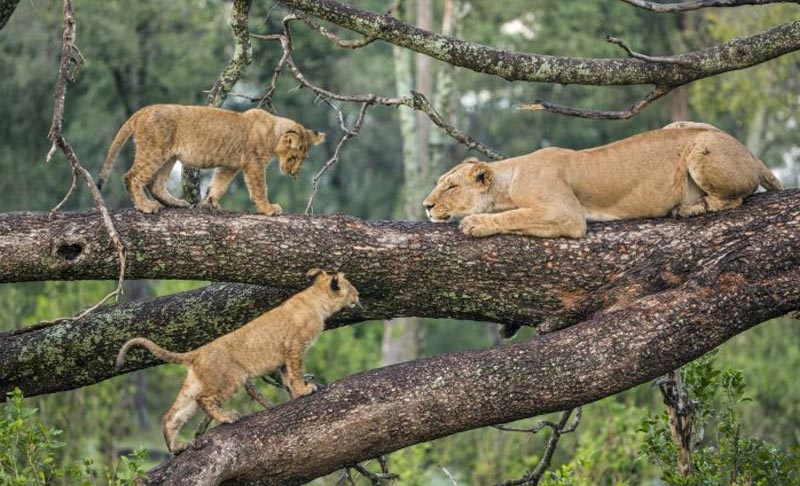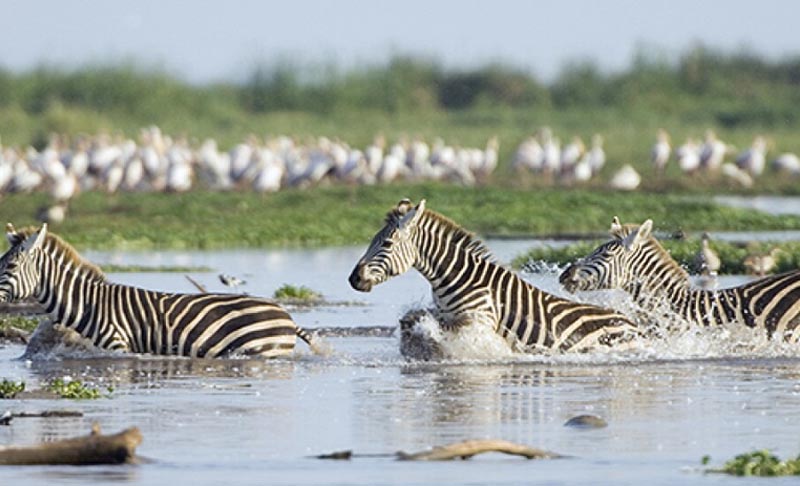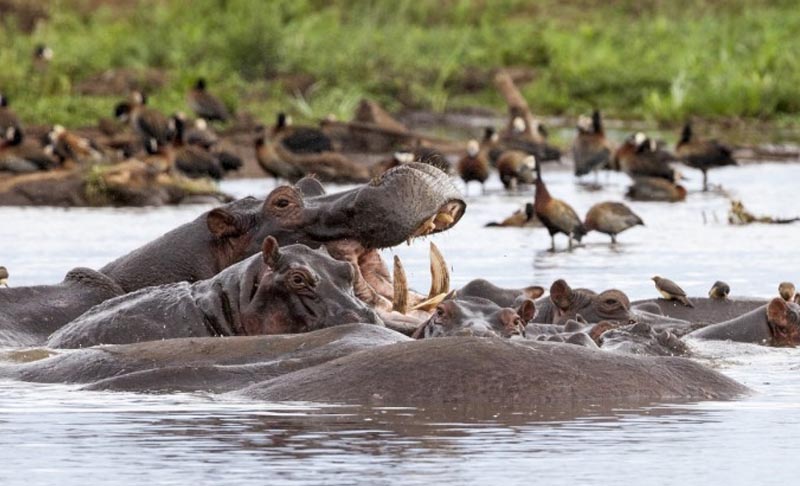Lake Manyara National Park
Lake Manyara National Park: A Hidden Gem in Tanzania
Nestled at the base of the Great Rift Valley escarpment, Lake Manyara National Park is one of Tanzania’s most scenic and diverse wildlife destinations. Covering approximately 325 square kilometers (125 square miles), the park may be small compared to other Tanzanian reserves, but it boasts an incredible variety of ecosystems, wildlife, and breathtaking landscapes. From lush groundwater forests to open savannas, acacia woodlands, and the vast alkaline lake, Lake Manyara offers a unique safari experience that sets it apart from other parks.
A Scenic Wonderland
One of the first things visitors notice upon entering the park is its stunning beauty. The landscape transitions from dense forests to open grasslands, with the shimmering waters of Lake Manyara stretching across the horizon. The park lies at the foot of the Great Rift Valley, with towering cliffs forming a dramatic backdrop. This rich environment supports an astonishing array of wildlife and birds, making it a paradise for nature lovers.


The Famous Tree-Climbing Lions
Lake Manyara is world-famous for its tree-climbing lions, a rare behavior seen in only a few places in Africa. Unlike typical lions that rest on the ground, Manyara’s lions often lounge on the branches of acacia and fig trees, surveying their surroundings from above. While the exact reason for this behavior remains uncertain, some believe it helps them escape insects, stay cool in the heat, or gain a better vantage point for spotting prey. Spotting these elusive arboreal predators is a highlight of any visit to the park.
Incredible Wildlife
Despite its small size, Lake Manyara National Park is home to a rich variety of wildlife. The park hosts elephants, buffaloes, giraffes, zebras, hippos, baboons, and various antelope species. Its lush environment provides an excellent habitat for large elephant herds, often seen foraging in the woodlands. In fact, Lake Manyara was once home to some of Africa’s largest elephant tuskers, a legacy of its conservation efforts.
In addition to the famous tree-climbing lions, leopards, cheetahs, and spotted hyenas roam the park, though they are more elusive. The open grassy floodplains are also home to herds of wildebeest, impalas, and warthogs, while the park’s dense forests are inhabited by troops of olive baboons and blue monkeys.
One of the park’s most exciting sights is the hippo pools, where large pods of hippos gather in the shallow waters. These massive creatures spend most of their time submerged, coming out at night to graze. Crocodiles can also be seen basking along the shorelines, waiting for an opportunity to hunt.


A Birdwatcher’s Paradise
Lake Manyara is one of Tanzania’s best birdwatching destinations, with over 400 recorded bird species. The park’s star attraction is the flamingo population, which flocks to the lake in thousands, creating a pink-hued spectacle along the water’s edge. Other notable waterbirds include pelicans, storks, herons, and cormorants, making the lake a must-visit for ornithologists and bird enthusiasts.
Beyond the lake, the park’s woodlands and forests host a variety of raptors, hornbills, kingfishers, bee-eaters, and sunbirds. Birdwatchers can also spot the striking African fish eagle, often seen swooping down to catch fish from the lake’s surface. Whether you are a seasoned birder or a casual observer, Lake Manyara’s birdlife is sure to captivate you.
Best Time to Visit
Lake Manyara National Park is a year-round destination, but the best time to visit depends on your interests.
June to October (Dry Season) – The best time for game viewing, as animals gather around water sources. The dry conditions also make roads easier to navigate.
November to May (Green Season) – A great time for birdwatching, as migratory birds arrive. The landscape is lush and vibrant, with fewer crowds. March to May brings heavy rains, which can make some roads muddy but also enhance the park’s natural beauty.

